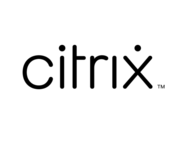User Virtualization Software
User Virtualization Software Overview
Best User Virtualization Software include:
Citrix Profile Management, Ivanti Environment Manager (formerly AppSense), Ivanti Workspace Control (powered by RES), VMware Dynamic Environment Manager (formerly User Environment Manager), Liquidware ProfileUnity, and Tricerat Simplify Suite.
User Virtualization Products
(1-9 of 9) Sorted by Most Reviews
The list of products below is based purely on reviews (sorted from most to least). There is no paid placement and analyst opinions do not influence their rankings. Here is our Promise to Buyers to ensure information on our site is reliable, useful, and worthy of your trust.
Learn More About User Virtualization Software
What is User Virtualization Software?
User virtualization software tools enable users to run multiple operating systems on a single desktop computer or machine. It creates desktop virtualization where a desktop environment is a virtual machine stored on a remote server that can be managed independently. They are capable of hosting unique operating systems through an integrated hosting control panel. The main concept behind user virtualization lies in being able to access applications and operating systems you otherwise could not depending on your device.
Two types of user virtualization software include persistent and non-persistent virtualized desktop infrastructure. Persistent VDI means the virtual image on the user’s desktop can be personalized with the addition of data, shortcuts, and files. With non-persistent VDI, the computer reverts to its original state upon the user logging out. Non-persistent VDI is much easier to manage, requires less storage, and is easier to update.
User virtualization software is ideal for IT employees and developers who require multiple operating systems for their work and projects within a single environment. These products have evolved to the point where they can capture everything a user does on a non-persistent desktop image allowing the user to log back into a refreshed image and see everything just as they had left it. They have become a useful tool in computing and IT and will only grow in popularity and use and we become more dependent on technology and virtual products.
User Virtualization Features & Capabilities
Persistent personas in non-persistent virtual desktop environments
Policy and profile updates based on changes in the environment
Rights management
Integration with Microsoft Active Directory
Allow users of non-persistent desktops to install applications without affecting the base machine image
Ability to connect and disconnect network printers
Ability to lock down desktop limiting access to storage, application installs, etc.
User Virtualization Comparison
Desktop virtualization: host server can run virtual machines using a hypervisor.
Application virtualization: the application is installed on a central server and can be virtually operated on multiple systems.
Server virtualization: dividing the resources of a single server onto multiple virtual servers.
Network virtualization: Assists in the management of the computer network as a single administrative entity.
Storage virtualization: manages physical storage of multiple network devices in a single device.
Ease of Use and Support. Most virtualization software users will be using these products for work purposes rather than entertainment. This means less time to get over a steep learning curve in order to spend more time on the business. Similarly, you will want to make sure you have a product that offers the support needed when issues arise.







